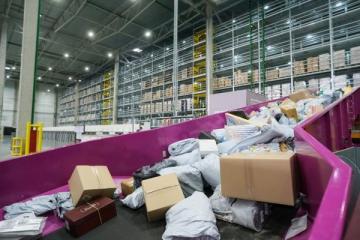
Current supply chain focus is predominantly on cargoes on the move, however safety concerns at the multiple locations where goods are ‘at rest’, either at the interfaces between different modes or in longer term storage, are just as critical.
The international freight transport insurer TT Club has turned its attention to the safety risks at cargo storage facilities. Some of these can lead to catastrophic incidents, though less startling events, together with near misses are more common in a congested supply chain world. Together these may have the potential to be just as damaging and disruptive. In continuing its mission to mitigate such risks, TT has issued a new warehousing series of its graphic TT Briefs.
As per the example below, TT Briefs are designed to convey risk management advice succinctly in easily digestible form for operators to download* and utilise both in the workplace and throughout their organisations. In the case of the warehouse series, five crucial topics are addressed:
- Choosing a storage warehouse
- Operating a safe warehouse
- Mitigating flood risk
- Preventing warehouse fires
- Operating a secure warehouse
“Whether located in port areas or inland, warehouses are a fundamental component of the global supply chain and arguably, they have become increasingly important nodes, as just in time supply chain models are being adjusted with a more conservative approach to longer-term inventory storage,” comments Mike Yarwood, TT’s MD of Loss Prevention. “We are keen to increase awareness of all key risks, however our role at TT is also to guide operators in the prevention of incidents. Our TT Brief series seeks to provide pithy messaging to support toolbox talks and good operational practices.”
Safety precautions begin with practical considerations for establishing a warehouse. These inevitably relate to location, size, availability of labour etc., but the first and most important decision will be whether to own or lease the property. There are considerable differences in responsibilities and liabilities and these must be fully understood to mitigate risk.
While there are more obvious physical measures such as perimeter fences, CCTV and barriers, effective security measures also include procedural aspects such as ensuring due diligence when hiring personnel. A consideration of growing importance is that of climate change, risk of exposure to weather related losses and likelihood of flooding. A less obvious consideration might be the activities of adjacent facilities, including potential contamination risks from incompatible cargoes.
Perhaps the most significant in terms risk to life, damage and cost of claims, is fire. The primary causes of warehouse fires include electrical failures or malfunction, hot works, maintenance related issues and poor enforcement of no smoking policies.
“As with much of our advice on loss prevention, preparation and planning are crucial,” says Yarwood. “Periodic risk assessment, effective maintenance and training, enforcement of policy and good housekeeping are all key as the TT Briefs highlight.”





